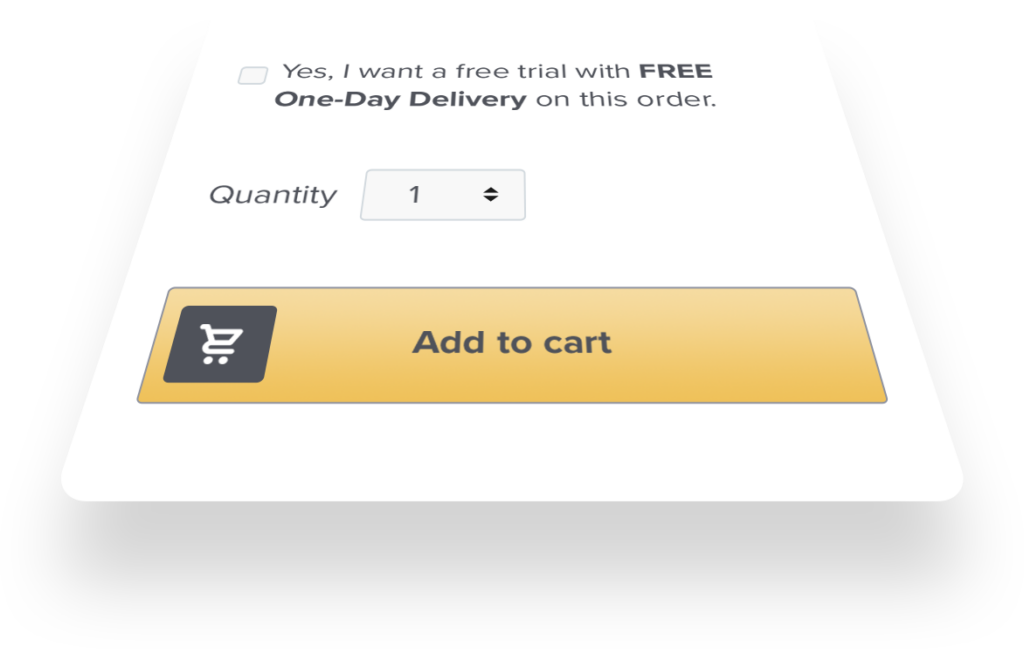Do you have an Amazon pricing strategy? As an Amazon seller, you probably know that each product can have many sellers. However, how do some sellers manage to capture the Buy Box, while others get side-tracked to the list at the bottom? While Amazon has never openly claimed that pricing is a determinant of whether or not you make it to the Buy Box, we have observed over time that it indeed is.
Coupled with factors such as your rating as a seller, customer satisfaction levels, the number and frequency of sales you’ve made, among other unknowns, the price of your product plays some role in deciding whether or not you’ll become the featured seller for a product.
Even in general, you want to ensure that your product pricing follows a few general guidelines to stand out on a marketplace like Amazon, while also leaving you the maximum possible margins.
Here are four Amazon pricing strategies you can apply to do better as an Amazon retailer.
Strategy 1: Competitive repricing
Suitable for: Undercutting competition
Repricing is the most common strategy employed by Amazon retailers to match up to the competition. Either manually or through the use of automated repricing tools like Repricer, you can adjust the price of your product to match the lowest amount at that time.
As mentioned above, repricing is not a sustainable strategy over the long run in most cases. Also, you need to constantly adjust the prices to a) ensure that you’re matching up and b) to prevent losses at a time when all other retailers increase their price.
Using a tool is always better than meddling with pricing manually. Repricer allows you to set the baseline for each product below which you’d not want to compete on pricing. It also adjusts prices dynamically all day long, so you can make the most of a price increase without even getting involved.
What you can do:
- Take a look around and see how many other retailers already exist for your choice of products. Also, keep an eye on their seller ratings.
- If there is too much competition, employ repricing. Do this with products that have a heavy profit margin, as you don’t want to end up with peanuts after every sale.
- Automate repricing so as to avoid manual intervention and to make the most of price fluctuations throughout the day.
- Consider adding products to your catalogue that have little to no competition but sufficient demand (Private Labels are an example) and sell them to build your seller rating over time.
- Ask customers to leave more reviews. Don’t be pushy, though.
Strategy 2: Repricing when there is no competition
Suitable for: Private Label Sellers
A common approach to repricing involves adjusting prices to stay competitive with several rivals. Yet, even sellers lacking direct competitors can benefit from strategic repricing. When competition is absent or minimal, sellers can adopt two primary repricing methods:
Let your sales guide your pricing

This method involves adjusting prices based on sales volume or order frequency. The goal is to optimize pricing for maximum profitability.
This could mean increasing prices during high-demand periods or reducing them when sales slow down. Take, for instance, major shopping events like Prime Day or Black Friday, characterized by heightened customer activity and buying readiness.
During such times, a seller might increase the price of a product from $7.99 to $8.99. This strategy can work well in specific categories and for sellers with strong performance metrics. It allows for maintaining a competitive price point with ‘close competition’ but more importantly capitalizes on increased market demand to boost sales.
Compete with sellers on alternative ASIN’s
For private-label sellers, the usual repricing strategies may not apply directly since no other sellers are offering the same product under the same Amazon Standard Identification Number (ASIN). Nevertheless, you can still adjust your prices in relation to sellers offering similar products under different ASINs. While these sellers aren’t direct competitors, adopting this approach helps you to effectively compete, aiming to boost your sales and profitability.
Leveraging a tool like Repricer.com, an automated Amazon repricing software, enables you to implement these pricing strategies efficiently. This can be particularly valuable in helping you to increase sales in the competitive landscape, even in scenarios where direct competition is not present.
Strategy 3: Getting to the Buy Box

Suitable for: Playing the numbers game
For a customer, the quickest way to get to checkout is to click on the ‘Buy Now’ option on the Amazon product page. How can you ensure that they buy from you from among many sellers?
By getting to the Buy Box and staying there.
When it comes to the Buy Box, price is not the only consideration. Indeed, you want to aim for the lowest existing fare at that point in time, but other factors also come into the picture. This is why getting to the Buy Box takes time and patience. While there are some parameters like a lower shipping time that you can hack, you cannot force a better seller rating instantly.
What you can do:
- Reduce your shipping time to under fourteen days, or as soon as possible.
- Reduce the number of returns and replacements by conducting a thorough check of your products.
- Reduce your cancellation rates by providing accurate descriptions.
- While Amazon has never said it, products sold through FBA get to the buy box more often as they invariably have the shortest delivery time.
- Be sure to ask customers to rate you as a seller, by providing them with the right link to do so.
Check out our FREE Guide: How To Win The Amazon Buy Box
Strategy 4: Stable Pricing with Exceptions
Suitable for: Building a sustainable presence on Amazon
For some retailers, Amazon is not just one among other sales channels to gain visibility. It is the primary channel that can make or break their retail business.
If this describes you accurately, then you must consider stable pricing.
For one, customers trust a moderate to high-value product more when its price doesn’t swing like a pendulum. Secondly, you’re looking to sell on Amazon for a long time to come. Reducing prices at every occasion may just not make you the kind of money you need to survive.
In such situations, you would do well to keep the price stable and as close to the market value of the product as possible.
This doesn’t mean that you shouldn’t make exceptions.
What you can do:
- The main aim of a price reduction should always be to increase your Amazon sales rank, which in turn can increase organic sales later.
- When you launch a new product, be sure to offer a discounted fare. Likewise, make bundled purchases lucrative by offering a price cut.
- Holiday season demands a sale from every retailer, so you shouldn’t make an exception either. During this time, traffic to the Amazon site is higher so you may also consider investing in sponsored listings.
- In all other instances, keep the price stable with few deviations.
Strategy 5: Value-Based Pricing
Suitable for: Private Labels
Simply put, a customer on the other end of the screen does not care about how much you have spent to manufacture or acquire a product, or what it might do to your bottom line to sell at a certain price. Dare we say it? They really don’t care about your sales targets either.
Therefore, a cost + profit pricing model is not really appropriate for Private Label sellers on Amazon.
As a Private Label seller, your greatest advantage is that you are not competing with other retailers. In this case, your product’s price is an absolute parameter and should be determined solely by what your customers might want to pay.
What you can do:
- Get your Amazon customers to care about your Label as a whole. Create short, simple stories around each product and include them in the description.
- Tell them what other users say. Talk about durability and flexibility for bags and sources and processing for foods. Share user opinions as opposed to your perspective.
- Send “Thank You” notes and your contact information with each product you ship through Amazon. Listen to feedback. Pay particular attention to complaints about the cost.
- Before you begin selling at all, even on Amazon, conduct thorough market research to understand what the ideal price could be. This saves you the need for adjusting prices once products go live, and no one thinks much of a product that gets consistently discounted over time.
Related: How to Sell Private Label Products on Amazon in 2024
Not Just Pricing!
Changing your prices, or your strategy, to suit Amazon’s requirements is just one aspect of the business. All of it would come to nothing if you do not maintain strict control over your inventory.
Take an example of a scenario when you’ve reduced prices drastically to match the competition and are now selling more products than usual. If you don’t have sufficient inventory, you will not be able to fulfil the orders in time, resulting in a bad seller rating which further pushes you off your selling streak.
To avoid such issues, always manage inventory with the help of inventory management software such as Primaseller. This way, you always have a perspective on inventory, get alerts when stocks run low and can manage orders without staying up all night.
Related: 6 Amazon Repricing Strategies Every Seller Needs to Know



